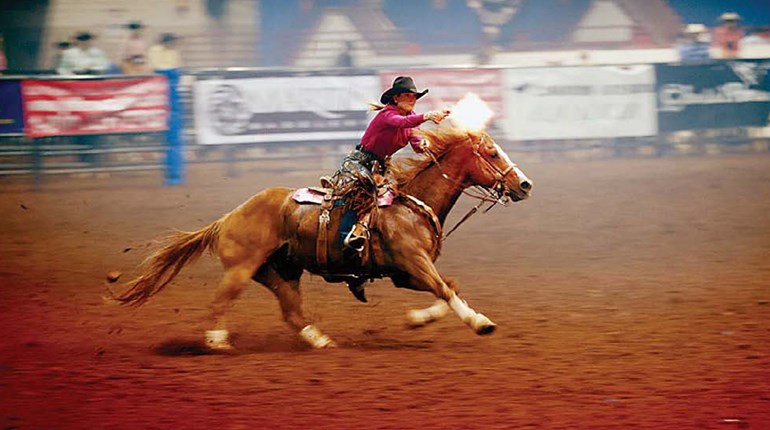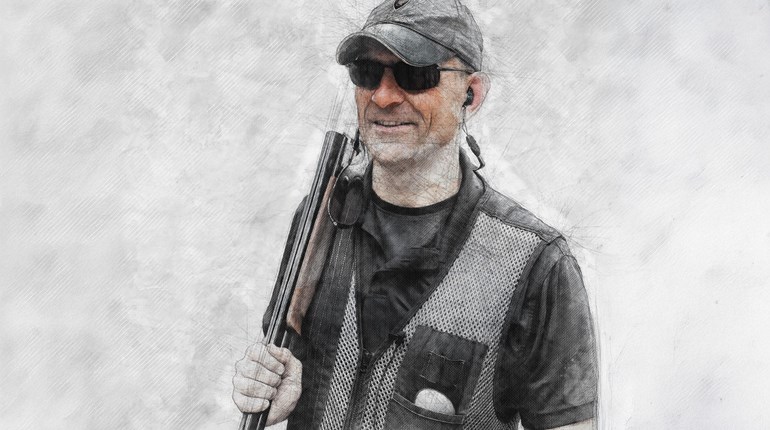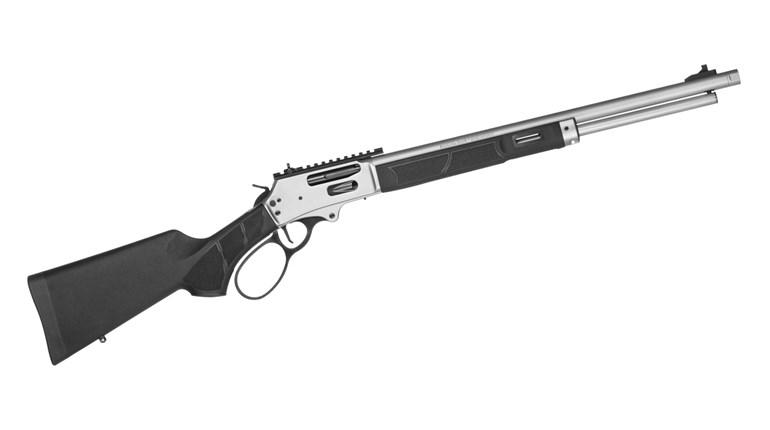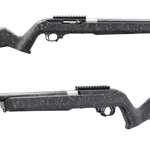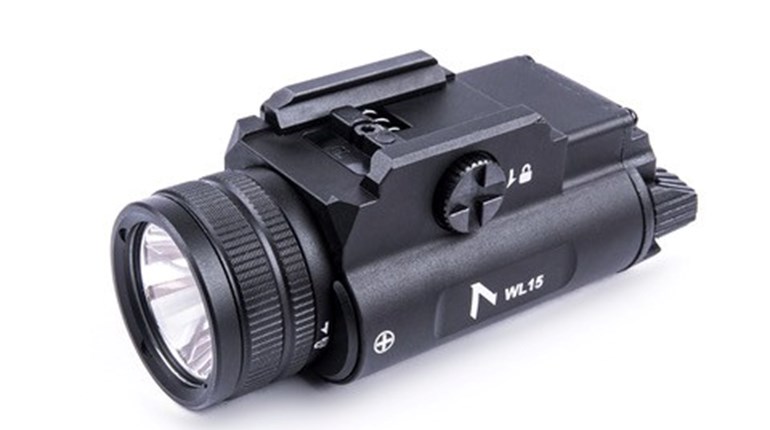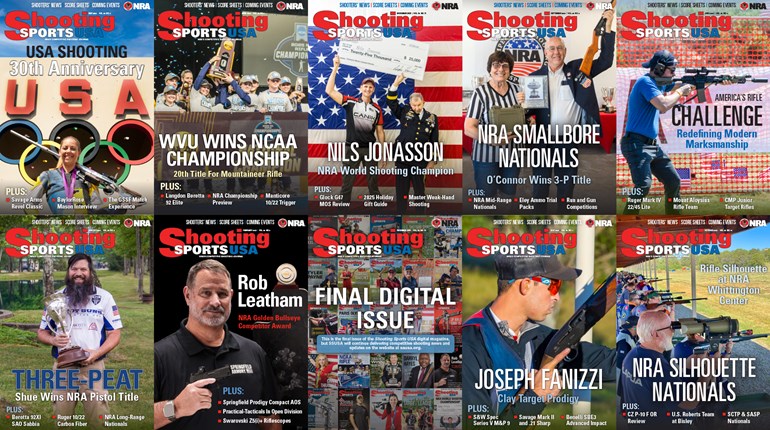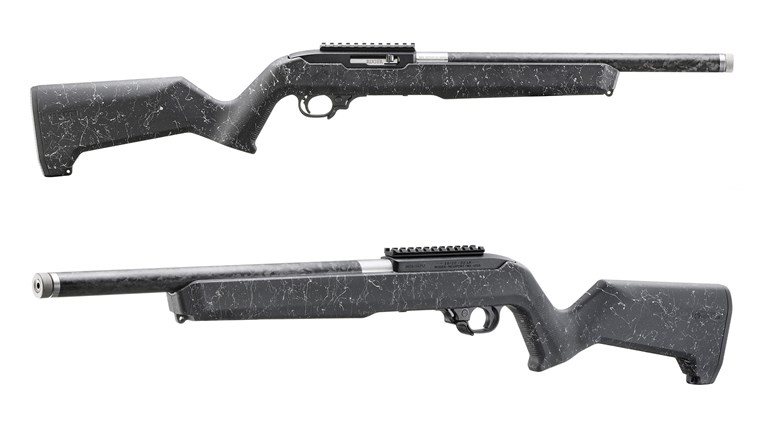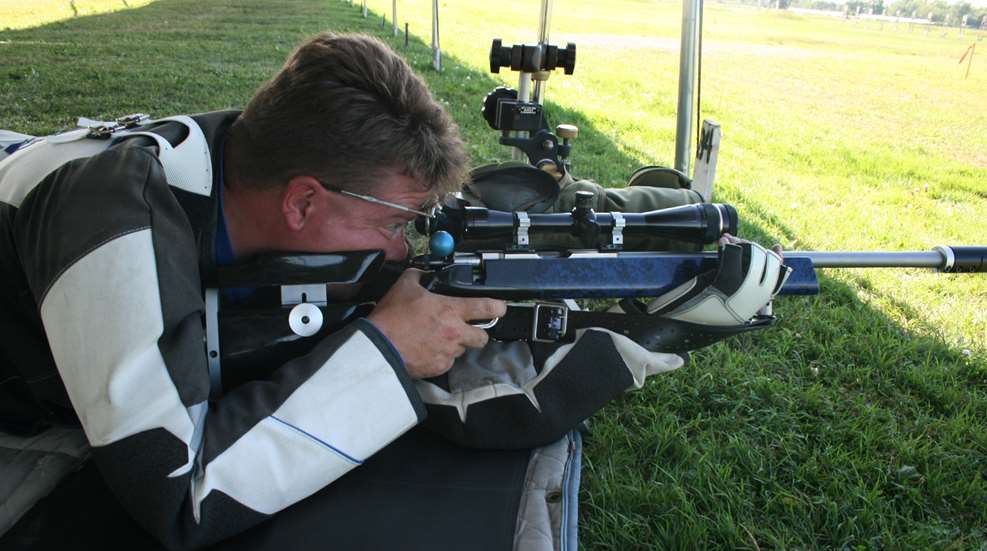
If you haven’t already, be sure to read Part 1, Part 2, Part 3, Part 4, Part 5, Part 6, Part 7 and Part 8 of this series of articles celebrating the National Smallbore Outdoor Rifle Championship Centennial.
2000
In the year 2000, NRA National Outdoor Smallbore Rifle Championships opened with Lake Erie’s legendary wind buffeting the line. When the aggregate scores for the metallic sight phase of the position championship were tallied, Lance Hopper was in first place by 20 points. But, he lost no time in taking advantage of the second day’s good conditions, winning both the standing and kneeling matches—and with those victories, the National Championship.
A tricky wind greeted the prone shooters and at the end of the day, Tommy Tamas had the winning score. Tamas, a former National Prone Champion, and Mike Anti were using Perry to keep in trim for the Olympic Games in Sydney, Australia.
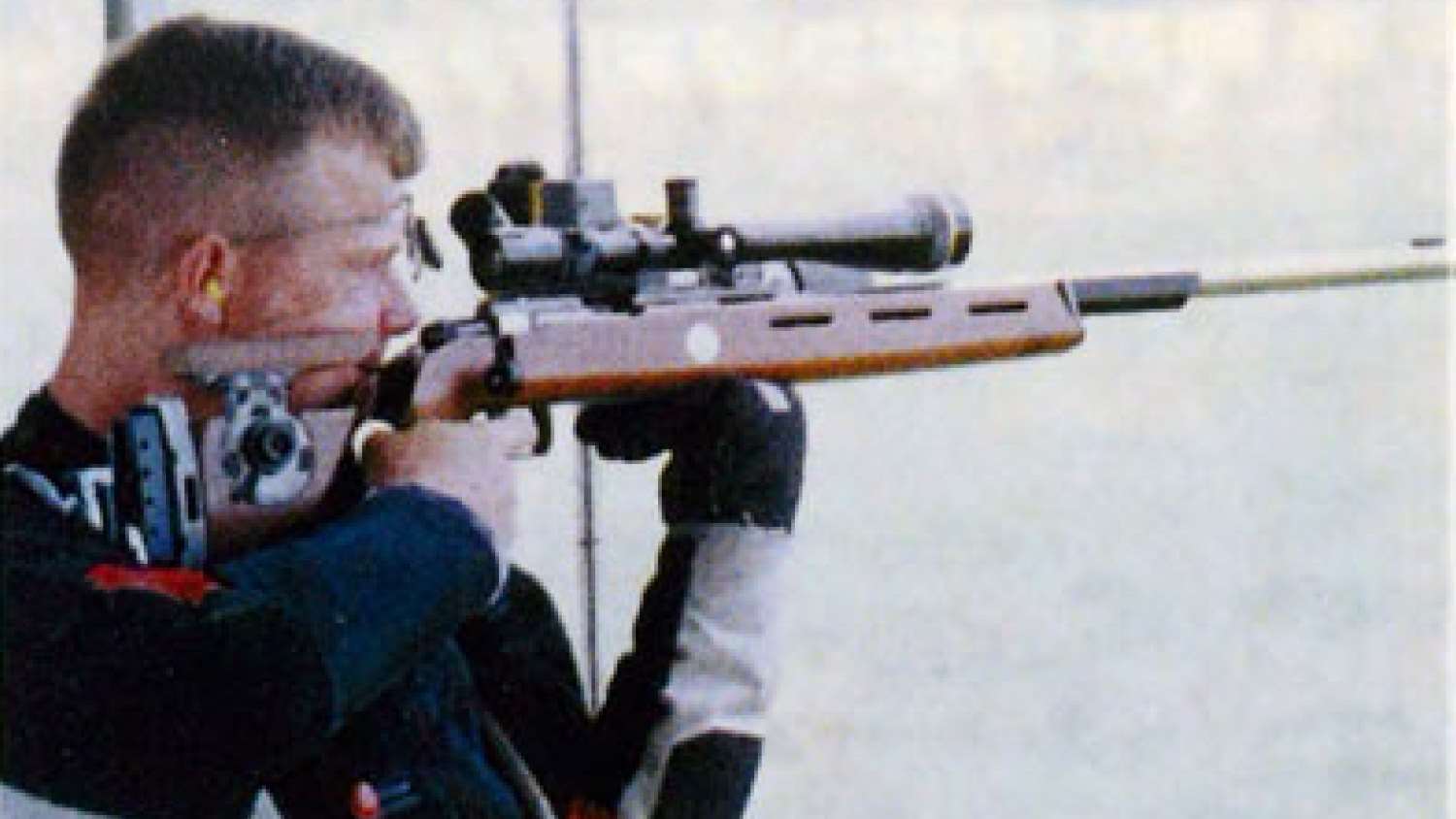
The second day of iron sights was much like the first and Tamas took the Metallic Sight Championship. While the race for the iron sights title attracted attention, the cognoscenti watched 82-year-old Joe Barnes compete in the 6400 any sight aggregate. Barnes, who shot the first 3200 with irons at Camp Perry in 1966, dealt with the foxy wind and ended up with a 3200, a feat recognized and warmly applauded by the appreciative gallery.
Mike Anti won the any sight championship, beating Tamas and sealing his 2000 National Prone Championship win.
It was an Olympic year and across the firing line, shooting, officiating, or visiting were a host of Olympians. Art Jackson, Lones Wigger, Jim Hill, Gary Anderson, Bruce Meredith, Tom Tamas and Mike Anti’s Olympic experience stretched from 1948 in London through the 2000 Games. The 82-year-old Jackson, who competed in the previous Olympics held in Australia, took a break from shooting to wish Tamas and Anti well as they headed down under.
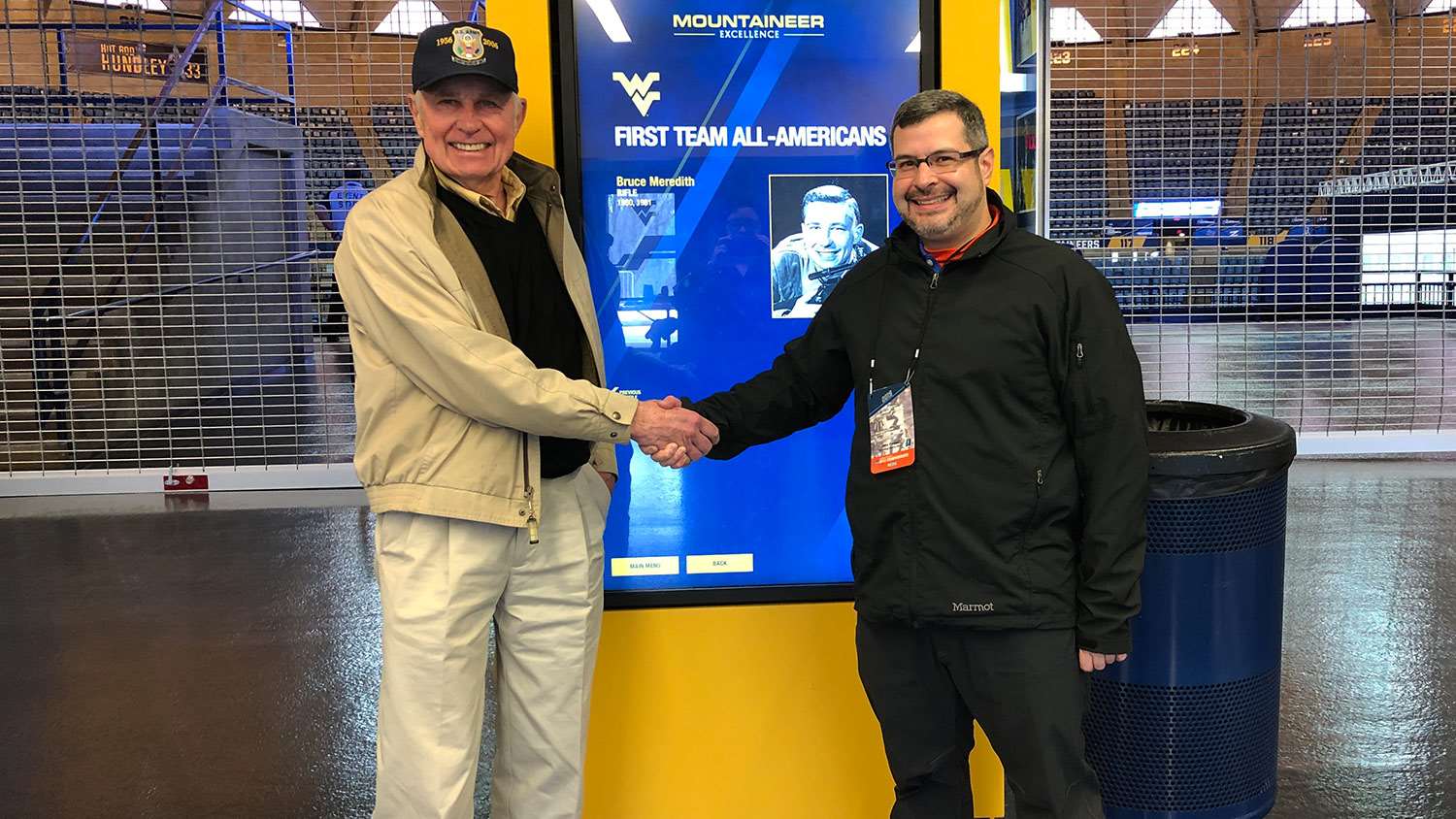
2001
Although it was windy during position, Troy Bassham seemed unaffected by the conditions and captured the metallic sight position title with a commanding lead. On the second day scopes came out and Mike Anti came out on top, just one point short of the any sight record. Bassham’s solid lead in irons held and he had his third position championship, placing him second on the all-time leader board for national position titles—just 18 championships behind Lones Wigger.
Two new trophies were on the stage. The was first to honor Bill Krilling, the 1965 National Prone Champion and the first to fire a perfect 3200 across the Critchfield Course. It was a fine bronze sculpture to be awarded annually, in his name, to the winner of the Three-Position metallic sight championship and that went to Troy Bassham.
Notably, in 2001 the Black Hawk Rifle Club endowed a trophy in memory of CWO4 D.I. Boyd II (USMC), awarded to the Three-Position any sight champion which went to Mike Anti. Boyd is the only rifle shooter to win both the smallbore position title, indoors and out, the national high power crown, and have two National Championship trophies in his honor—one in smallbore and the other high power rifle.
The prone matches got off to a hot start with temperatures tickling three digits, bright sun, and a fast wind from two o’clock. Trevor Gathman won the day, three down. The scores began a steady decline from there making it clear that the conditions were taking their toll.
The second day of irons opened with the same conditions. While Celeste Green topped the field, Mike Anti shot solid scores to win the Metallic Sight Championship.
In between the two prone phases, the golden anniversary of the Randle Trophy International Women’s Team Match was celebrated. Sitting in the gallery during the Randle was a distinguished quartet of ladies. U.S. shooters Mary Cook and Marianne Driver, and Irene Read and Veronica Tidmarsh from Great Britain have witnessed, shot, been alternates, coached and captained Randle Teams on both sides of the Atlantic since the match began. Cook and husband Art have led both the Randle and the Dewar. Driver is the mother of two other Randle legends—Lenore Lemanski and Bobbi Vitito. She and her two daughters have accumulated an astonishing 63 Randle appearances among them. Read was the official witness to both the Randle and the Dewar. Tidmarsh served as the official witness for many Randles, including the U.S. record setting 4000-303X match in 1975.
Steve Goff won the first any sight daily aggregate in fair, dry and windy weather. Another Steve, Steve Kern, won the any sight championship.
In the end, Goff, and Anti, battled it out to almost the last shot to determine the national prone champion. Goff led by just one point and three Xs over the four days—earning him the Critchfield Trophy.
2002
During the Three-Position Championship, there was hardly a hint of breeze as junior Jaime Beyerle won the iron sight championship. Starting with the kneeling match in the iron sight aggregate, Jeff Doerschler won four consecutive fired matches. A clean sweep of any sights was a feat even Lones Wigger rarely accomplished. Doerschler’s virtuoso performance gave him the any sight championship and pulled him to just five points behind the leader. Shane Barnhart, shooting the entire match with iron sights, garnered the Parsons Trophy.
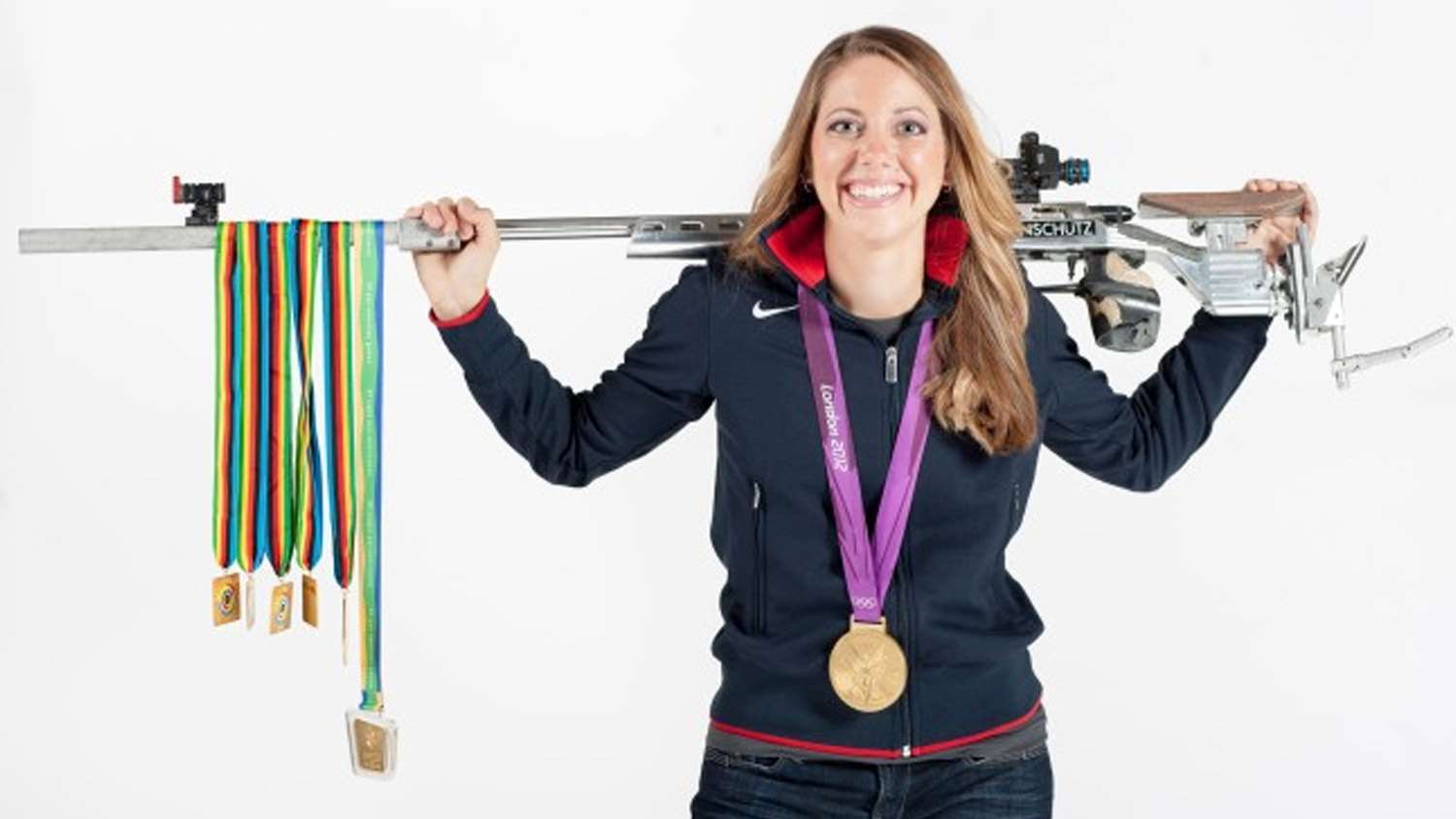
As prone practice began wind gusts toppled of the firing line awning. No one was hurt but the prone matches would be out in the open for the first time in 18 years. Competitors would battle sun, rain and heavy buffeting winds in a setting that only a few of the gray beards on the line could remember. That didn’t seem to bother a young Expert-class competitor named Joshua Albright who won the first day of irons.
A lightning storm sparked an evacuation of the range on the second day. With targets being torn from the frames by the wind and rain, the shooters took shelter. Match Director George Harris called a rare smallbore range alibi, new targets were hung, and the match was completed. Jim Miller took the day and the first half of the championships ended with the new Prone Metallic Sight Champion Josh Albright in the driver’s seat.
The Stratford Connecticut Police Athletic Rifle Club and the Bell City Rifle Club of Southington, CT, endowed a trophy in honor of the late Walt Tomsen as an award for high senior in the metallic sight aggregate. Tomsen, an endearing curmudgeon of the first order, was the silver medalist in the English Match at the 1948 Olympics, as well as a member of many Dewar Teams and a Pershing Team veteran. Stratford tricked Walt’s son Greg into making the base for the Tomsen Trophy. Fortune would see the trophy awarded to Lones Wigger—a man very much used to being first.
Conditions had not abated for scope. In a match with over 300 competitors, it’s safe to conclude that conditions are tough if Wigger wins with a 1599.
The last day of the match began as a scope shooter’s delight, but it was not to last. Ominous black clouds, lit by lightning, caused the line to be evacuated for the fifth time in six days. The storm clouds rolled on by without so much as a raindrop or lightning bolt coming close to the range.
Wigger pulled off another first when he became the any sight senior champion and was awarded the new Robert H. Plimpton Trophy to add to the new Tomsen Trophy he won as the senior metallic sight champion. In honor of Bob Plimpton, who has done much to promote smallbore prone shooting, Tthe Black Hawk Rifle Club donated the Plimpton Trophy—whose base was the second of the two built by Greg Tomsen.
The winner of the Sam Bond Trophy, as senior champion, the William P. Schweitzer Trophy as civilian champion, and the Critchfield Trophy as national champion was none other than Lones Wigger—just a few weeks short of his 65th birthday. Additionally, he became the oldest competitor to ever win the prone championship.
2003
A new, roomier aluminum frame and silver canvas cover replaced the old worn green canvas canopy that was destroyed by the wind in 2002. Jamie Beyerle took advantage of the shelter and recorded her second consecutive Three-Position Metallic Sight Championship. And, Anti won the any sight crown and his second National Position Championship.
The prone matches began with discussion among the shooters of the new range configuration. The Ohio National Guard had built a combat range on part of the line that required a series of berms, parallel to the firing line at varying distances. The berms created banks of five competition targets, giving the target line a broken toothed look and unusual winds.
British Rifleman Tony Lincoln earned the Hoppe Memorial Trophy to become the first foreign national to win the National Metallic Sight Championship. Lincoln’s performance put him in the unusual position of shooting a qualifying score for a spot on the United States Dewar Team, a honor the rules required that he decline.
Shooting is a sport of cumulative tension and the championship was a demonstration of just how tense things can get. Coming out of iron sights the top four were separated by one point. The first day of any sights ended with Carolyn Sparks, Anti, Gideon and 10 others going clean. The leaderboard had Sparks in first, down two, with Anti, Paul Gideon and Lincoln knotted up at three down.
To win a 6400-point aggregate, a shooter needs skill, a good rifle and ammunition combination—and a touch of luck. Luck is often defined as the residue of good preparation and Gideon was well prepared. He had tested 30 lots of ammunition until he came across “a stray lot of R-50” that was clearly superior. Thus, it was a clean win for Gideon.
2004
The 2004 National Three-Position Championships was a trial for those who struggled through the days of high winds and gray sky. A terrific windstorm again tore down the awning. The first day opened with Tommy Tamas taking the prone match. Conditions got worse throughout the day and when it was all said and done, Jamie Beyerle emerged victorious. In second and third was Vinnie Pestilli and Tamas, respectively. Just off the radar screen wasJeff Doerschler, the 2002 civilian champion.
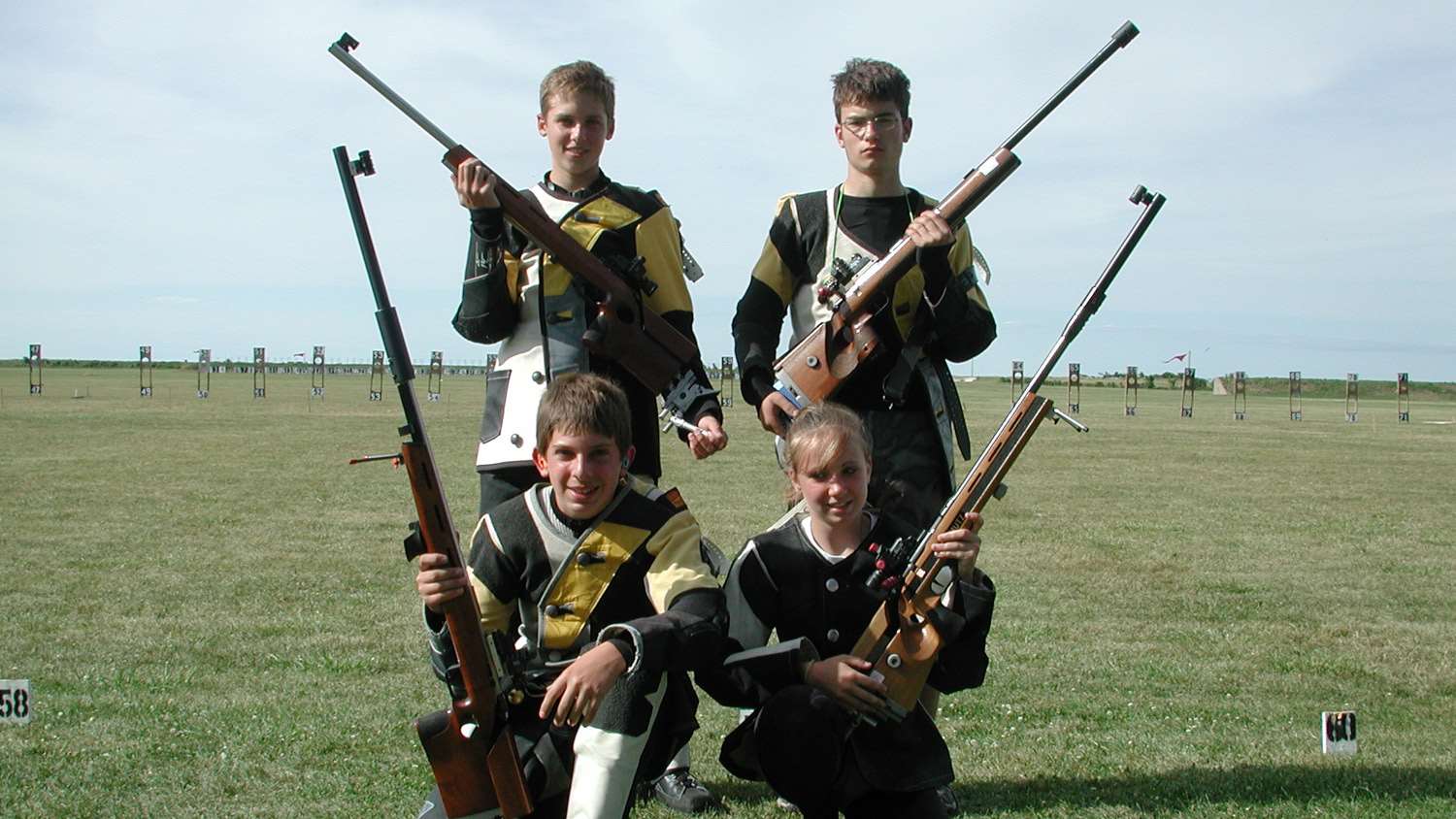
Hope that conditions might change for the better for the any sight match died quickly for winds as unrelenting as the day before greeted competitors. Luckily, the winds slowly dropped off as the day progressed. By late afternoon and the final kneeling match, shooting conditions had improved remarkably.
The second day decided two championships, the any sight and the national title. With a pair of wins, standing and kneeling, and a decent enough prone score, Doerschler found himself the Any Sight Champion for the second time since 2002. An indication of the wretched conditions on the second day was that his score with any sights was 13 points less than his iron score. When scores from both days were combined, Doerschler was the proud owner of the Parson’s Trophy, a gold-plated medallion, 55 NRA award points, a Ruger 10/22 rifle and assorted donated merchandise.
A crew from the awning company, NRA match staff, and Reserve and National Guard troops pitched in to raise the repaired awning in a matter of hours during what would have been the prone practice period. Prone shooters were more than happy to trade off practice for the awning.
This is not to say there was no shooting that afternoon. Ten juniors had been selected from among the highest scores posted during prone phase of the position matches for a special team match, the William Drew Cup Trophy Match. On the 95th anniversary of the Dewar Trophy Cup Match, the British National Small-bore Rifle Association inaugurated the Drew Cup, the junior equivalent of the venerable postal match. An English Match, 60 shots at 50 meters on metric targets, the event pits the youth of Australia, Britain, Canada, New Zealand, South Africa and the U.S. for possession of an 18-inch, 45-ounce sterling silver trophy presented in honor of prominent British rifleman William Drew.
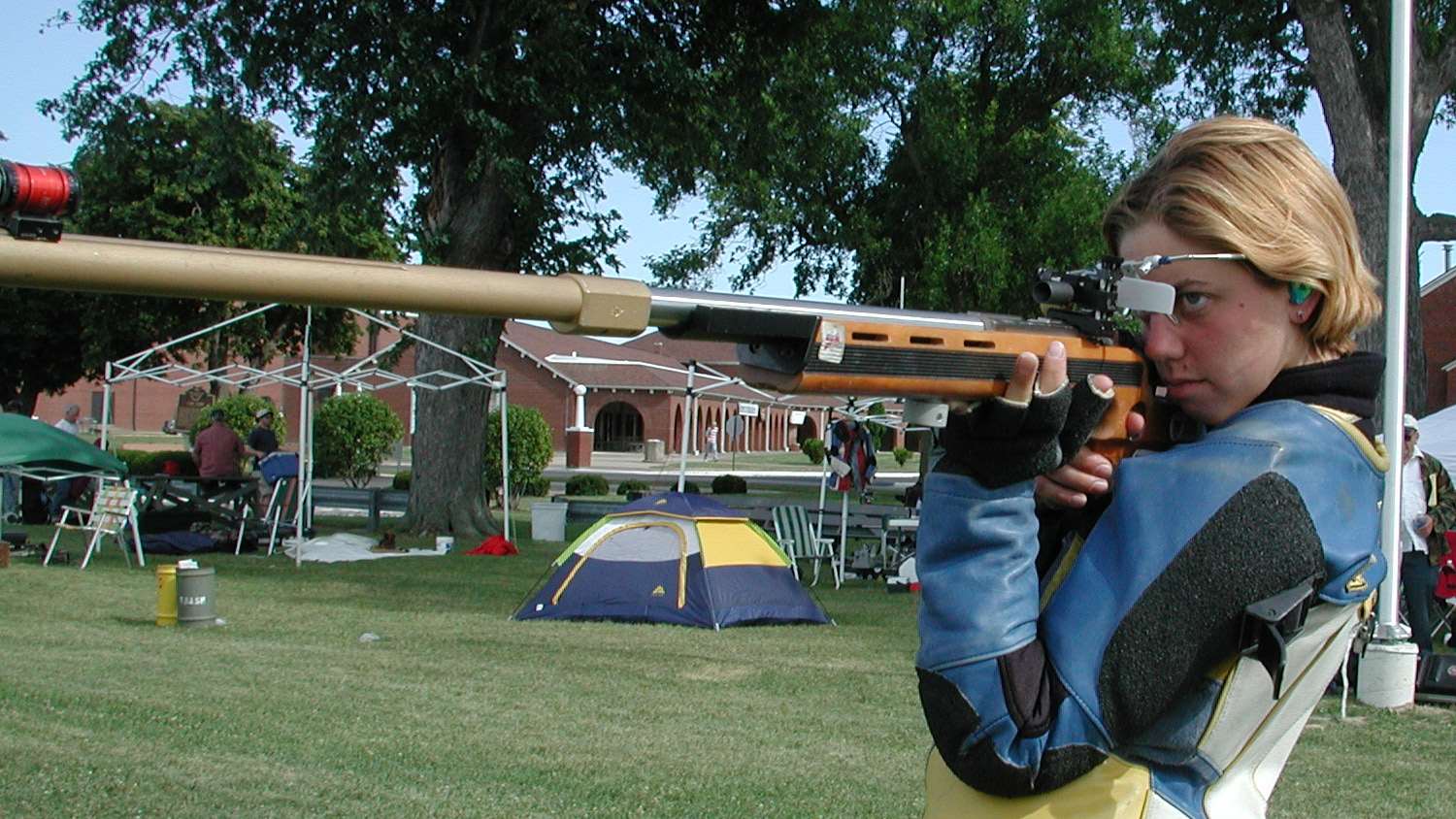
The big Drew team match of 10 competitors, consisting of a three-man team and a three-woman team, were fired concurrently. Nathaniel Holcomb, Alexander Karacsonyi and Brian Launer shot the men’s match; while Jamie Beyerle, Melissa Lussier and Jaymi Collar did the distaff honors. With the addition of scores from Thomas Rider, Justin Pentz, Jason Dardas and Andy Lamson; the 10-person team, including alternates William Butler and David Sprecher was in place. The U.S. team performed well under the guidance of Team Coach H.J. “Walt” Walter, Team Captain Paul Benneche and Team Adjutant Paul Vilmer. It was a bright spot in a tough week of competition for the youngsters and, for most, an initial taste of international competition.
Overcast skies marked the first day of prone competition. The carryover from position was a portent of things to come. After 160 shots Tamas was in the lead with a perfect 1600-127X. Hot on his heels were Jaymi Collar and Kevin Nevius.
The rain returned early on the second day and would remain all day. Conditions were so bad that some shooters withdrew, and a range delay was called to wait out the whims of the increasingly foul weather. It became apparent that conditions would not moderate and the final two matches of the day were cancelled. Lest you think it was out of concern for the shooters, the real reason was that water-soaked targets are extremely fragile and nearly impossible to score.
The truncated metallic sight program was won by Tamas.
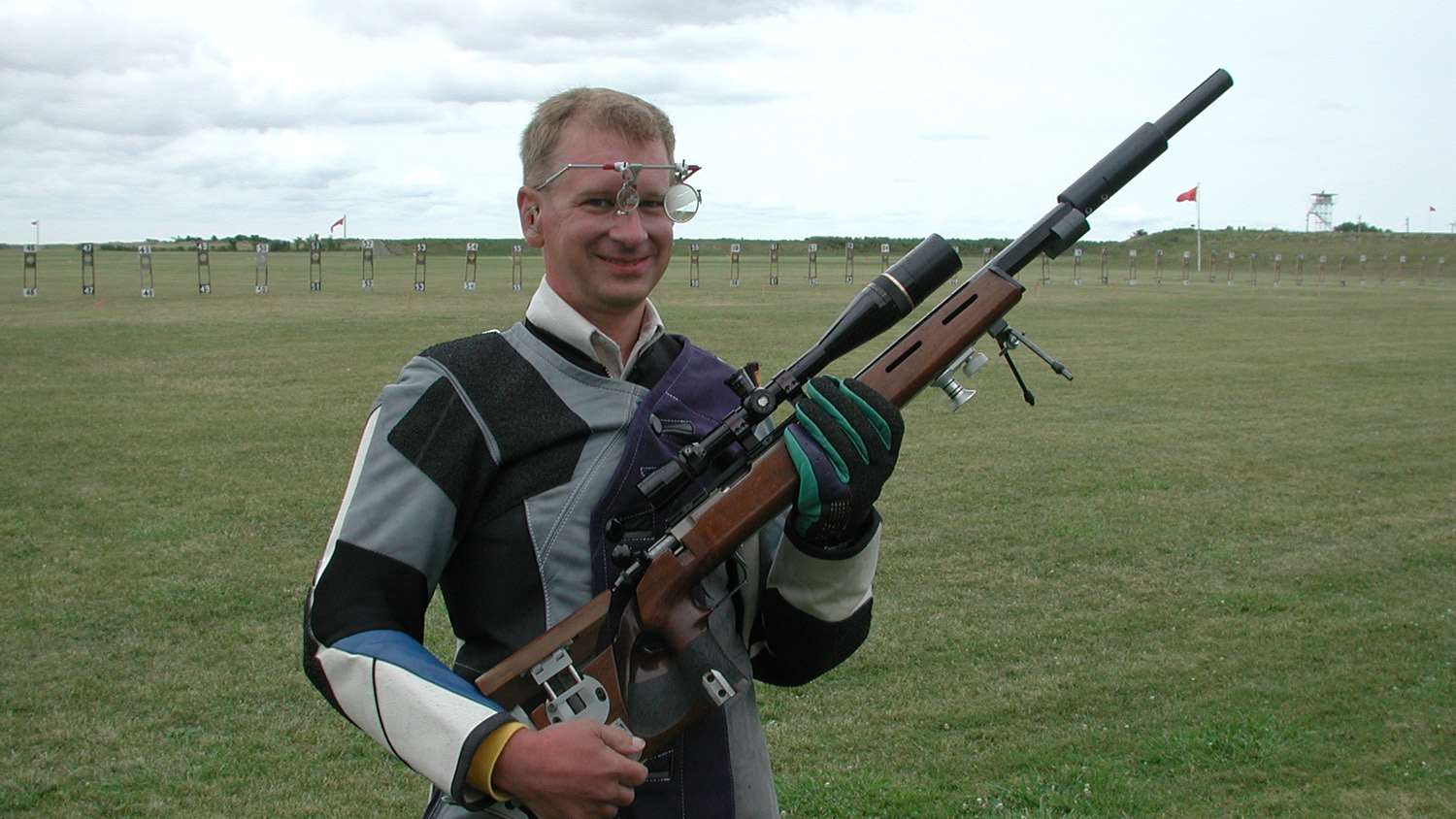
The first day of scope shooting ended in an improbable four-way tie for first that involved four national champions: Goff, one of the few riflemen to have won both prone and position titles; Paul Gideon, defending prone champion; Carolyn Sparks, the 1993 prone champion; and Doerschler, reigning Three-Position champion. All four posted 1600-139X. The rulebook was opened to the well-thumbed page containing section 15—Decision of Ties. After some checking of scores at long-range and X-counts, it was determined that Goff had won.
The final day would see the sun play hide and seek from relay to relay. Sparks and Cory Brunetti, two former national prone champions, were involved in a closely fought battle for the any sight title. Both had gone clean for two days and it came down to Sparks’ nine-X advantage to determine who would take home the U.S. Cartridge Company Trophy.
Jamie Beyerle held hard and eventually stood atop the podium at the awards ceremony as the first junior to win the National Prone Championship, the first champion to do it with iron sights all the way—and the youngest person ever to win the title.
2005
The National Smallbore Three-Position Championships was hot and humid, but the scorching sun couldn’t stop Jamie Beyerle from repeating as the metallic sight champion. Vinnie Pestilli emerged the any sight king. Shane Barnhart didn’t win any sub aggregate, but his consistent performance brought him the Frank Parsons Trophy as national champion.
The Frazier-Simplex Rifle Club honored Robert K. Moore, the first U.S. Indoor Smallbore Position Champion and the 1958 National Prone Champion, by gifting the Robert K. Moore Trophy to be awarded to the senior three position champion. Moore returned to Perry to present the award it to its first winner, Fred Cole.
The prone shooters were greeted by cloudy skies that soon turned into sporadic showers. Tommy Tamas took the opening prone match and went on to post the day’s only clean. Well within striking distance were Beyerle, Goff, and Wes Robinson, all with 1599s. There were many 1598s and 1597s that also threatened the leaders. At a prone match, no lead is safe.
The day ended with a reception for the British Pershing Team hosted by the American Dewar Shooter’s Club. Club President Jim Miller arranged for a cold collation after the final match so that visitors and hosts might get to know each other better. The five-foot-long submarine sandwich, unfamiliar fare to the visitors from the land of Toad in the Hole and Bangers and Mash, did not seem to curb their curiosity, adventurous spirit or appetite as they tucked into the spread with great gusto. Plentiful victuals and warm comradeship did a great deal to chase away the gloom of a damp day.
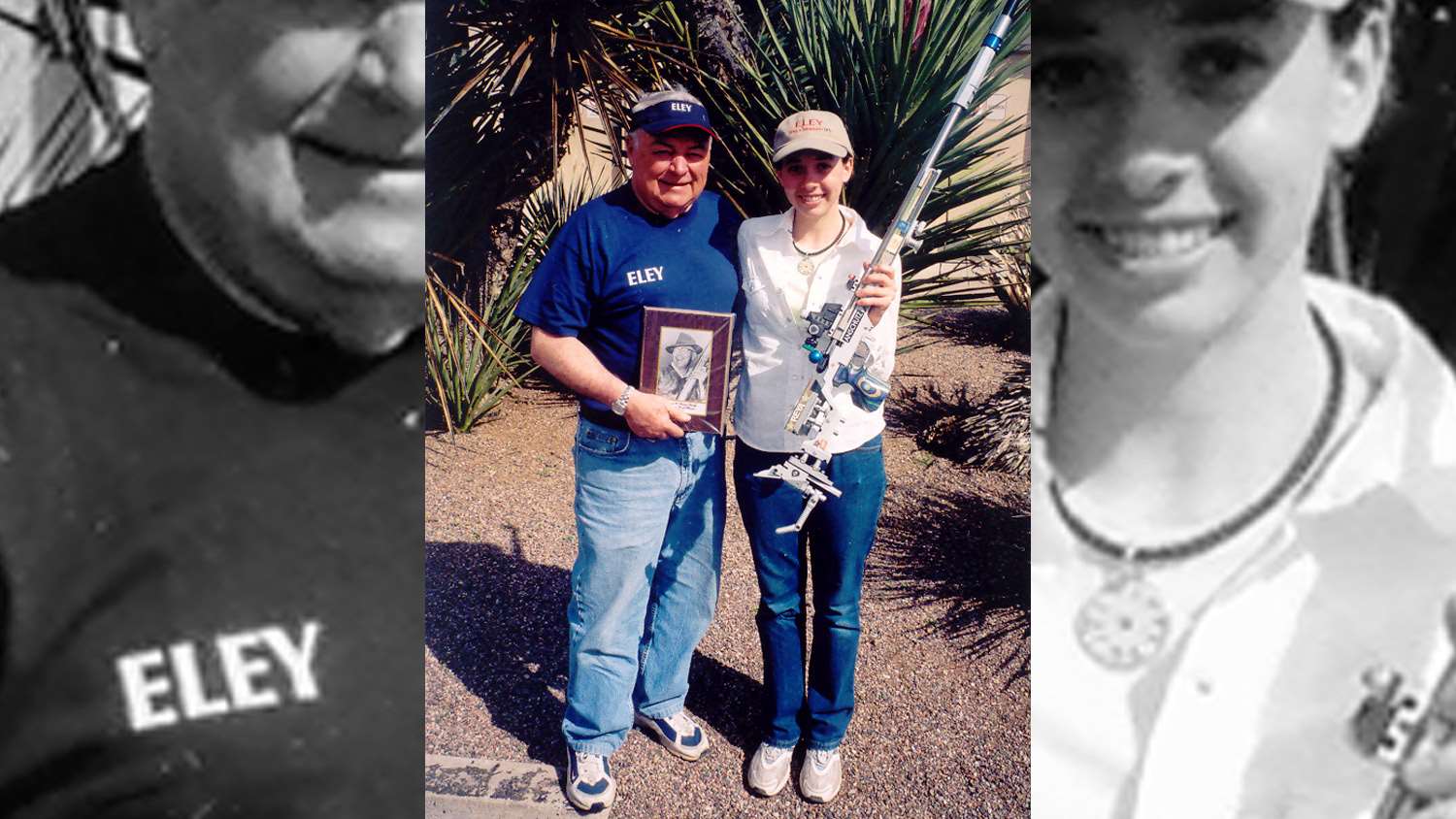
Humility is only one shot away as Tamas quickly found out when he dropped a point in the second Dewar to drop into a tie with Beyerle. Phillip Lawrence, of the British Pershing Team, ended up winning the second day’s aggregate with an outstanding 1599-127X. The visitor’s individual and collective success did not go unnoticed by the home team for it appeared a real battle was in the offing for the Pershing Trophy.
The high scorer on the U.S. Dewar Team receives a plaque and, at the instigation of shooting historians Paul Nordquist and Hap Rocketto, the NRA Smallbore Committee voted to name the award after the man that may be considered the father of smallbore shooting as we know it in the United States. The first recipient of the Edward C. Crossman Trophy was Tamas with a score of 396.
The top twelve shooters from the metallic sight aggregate were selected for the U.S. Pershing Team with the 10 best firing the match under the watchful eye of Captain Edie Reynolds, Adjutant George Harris and Head Coach Dave Cramer. Beyerle, Tamas, Mike Anti, Barnhart, Joe Hein, Jason Parker, Steve Goff, Wes Robinson, and Paul Gideon shot; while Boyd Goldsby and Nathaniel Holcomb acted as alternates.
On Pershing Day, an early morning rain beat a monotonous drum roll on the firing line awning but soon melted away under a strong sun. After drawing for points, shooters from Canada, Great Britain, and the U.S. teams took to the line grouped in five pairs of two, each with a coach. The competition and the wet weather were a challenge to the U.S. because conditions were more like those found at Bisley, which was more comforting to the British than the traditional hot and humid Perry weather favored by the home team.
In the end it came down to the X-count and, in the closest finish in the history of the match, the U.S. managed a win by a margin of just 25 Xs. Canada, a team of great sportsmen and women, came in third. In a game where fractions of an inch often decide the winner, it was a close shave.
The weather was near perfect, the best of the tournament, mid-70s with low humidity and relatively constant winds for the first day of any sights. Tamas, for the third time in as many opportunities, opened a phase with a win. He went perfect through the day and was the best of five 1600s.
With the match coming down to the wire, Tamas was in a commanding position, if such a thing can ever be said about a prone match. He was in the lead by one point and 24 Xs. Forty shots with a scope at 50 yards is usually a slam dunk, but with a national championship on the line, nothing is guaranteed. He didn’t win the match, but he had regained the National Smallbore Rifle Prone Championship.
2006
Mike Anti started out winning in the iron sight prone match. Matches may be lost prone, but they are won standing and Anti made a strong statement at reclaiming the position title by taking the standing match. He was in control, but Anti still had to fire 40 shots kneeling, a match that he certainly remembered. Anti was penalized two points for taking an extra shot kneeling in Athens in 2004, possibly costing him the gold. It didn’t seem to bother him and he had a clean sweep of the metallic sight matches.
Most shooters exchanged metallic sights for telescopic sights with the notable exception of Anti, who confidently kept irons sights on his rifle. By the end of the day, the defending champion Shane Barnhart needed to pick up four points on Anti over the last 40 shots to keep from being deposed. It was nip and tuck the whole way during kneeling, and Barnhart took the any sight title.
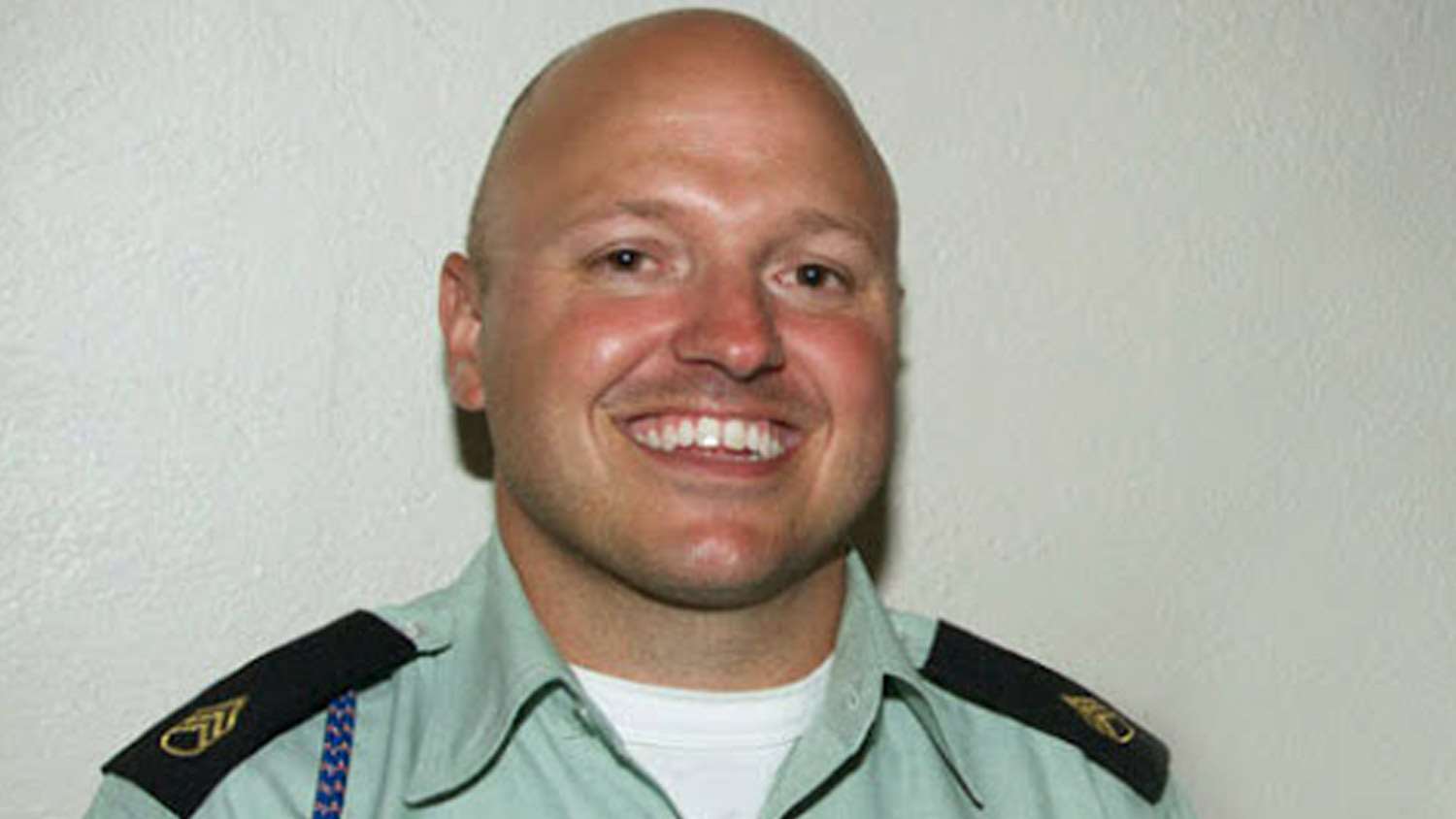
He held off Barnhart and his third victory moved Anti into a tie for the second highest number of Perry position victories with Troy Bassham—both 18 victories behind Lones Wigger’s 21 wins.
The prone championships began with Anti, sitting on the Three-Position Championship and hungry for the rare double Smallbore Rifle Championship. Armando Ayala was in the lead after the first day, but Anti was within striking distance.
The second day’s daily aggregate went to Paul Gideon. Anti was still in good position to win double titles, but he would have to be perfect with the scope and hope the leaders stumbled. The iron sight championship was over with a trio of former prone champions at the top, Gideon, Cory Brunetti and Anti.
On the first day of the any sight aggregate, as the targets were being hung, the clouds began to darken, and the winds started to rise. Increasing rain accompanied by wind from seven o’clock marked the long day, which saw Lones Wigger post the only 1600 score of the day.
As for the final day, tension rose as the targets were moved in from 100 yards. With scopes and short distance, conventional wisdom would be that the leaderboard would hold firm. However, in unconventional situations, conventional wisdom is not valid. In shooting, nothing is a sure thing. No matter how it looked on paper, the final standing would be decided on the firing line.
The end of this nail-biter would come with biggest target, at the shortest range, with telescopic sights. It’s been said that a nine shot at 50 yards with a scope has produced more lies than all the tax laws in the history of mankind. Mike Anti showed the stern stuff that stood by him through three Olympics as he took the last match with a 400-38X—but it was not enough. After two days of any sight competition, Lones Wigger reigned supreme with the scope. In the battle for the National Championship, Gideon proved that his win in 2003 was no fluke. Despite difficult conditions, he bested Anti by four points. The 2006 Smallbore Nationals had some of the toughest conditions in recent memory, with only one 1600 prone score recorded by 235 shooters over four days.
That night Edie Reynolds, NRA Director and Smallbore Committee Chair, interrupted the awards ceremony. To a standing ovation, the soon to be retiring George Harris, head of the NRA Rifle Department and longtime National Championship Match Director, and NRA Director of Shooting Competitions M.S. “Gil” Gilchrist, were recognized for their long years of service to competitive shooting.
2007
Some 323 competitors, about 10 percent of all NRA Three-Position classification card holders, opened equipment bags and readied their gear for the metallic sight aggregate. Junior Taylor Beard, her hair styled in two golden braids, took two of three matches and with them the Metallic Sight Championship.
Wind rushed in rain clouds as the any sight aggregate kicked off. Placing in the final two matches gave Shane Barnhart the any sight championship and his third Frank Parsons Memorial Trophy as National Champion.
Much to the relief of the belly shooters, the wind, which had harried the position shooters for three days, blew itself out leaving just a few gentle zephyrs.
Rob Harbison held tight throughout and was the only one who carded four perfect scores on a day when so many hopes had ridden high on gentle winds and blue skies.
After two days, the Hoppe Memorial Trophy, emblematic of the U.S. Metallic Sight Championship, was awarded to a British shooter as Keith Ridgway who joined Tony Lincoln, the 2003 winner in this most exclusive club.
The last half of the National Prone Championship opened with Ridgway, Harbison, Mike Anti and Shane Barnhart all within two points of each other. Based on experience, and barring any major disasters or wild weather conditions, these four would be battling it out for the Critchfield Trophy.
There was a lot of good shooting on day one as Eric Hoskins shot his first 1600 to post the score that won the day.
There would be no room for error as the mild conditions were unlikely to play a part in the eventual outcome. The day ended with Anti hanging up the only 1600, but Harbison was the any sight champion and led an Army sweep of the top three positions in the grand aggregate.
2008
The 2008 Three-Position Championship opened with the anticipation of new championship records to be set. During the winter, the position match program had undergone it first remodeling since the 1978 switch over from four positions to three positions. The Three-Position format would remain, but the target was changed from the international A-50 to the NRA Conventional A-26 “Bucket Bull.” A new target meant that all position records were vacated. Some thought it regressive, but the hope was that it would bring out shooters who were intimidated by the tight international rings.
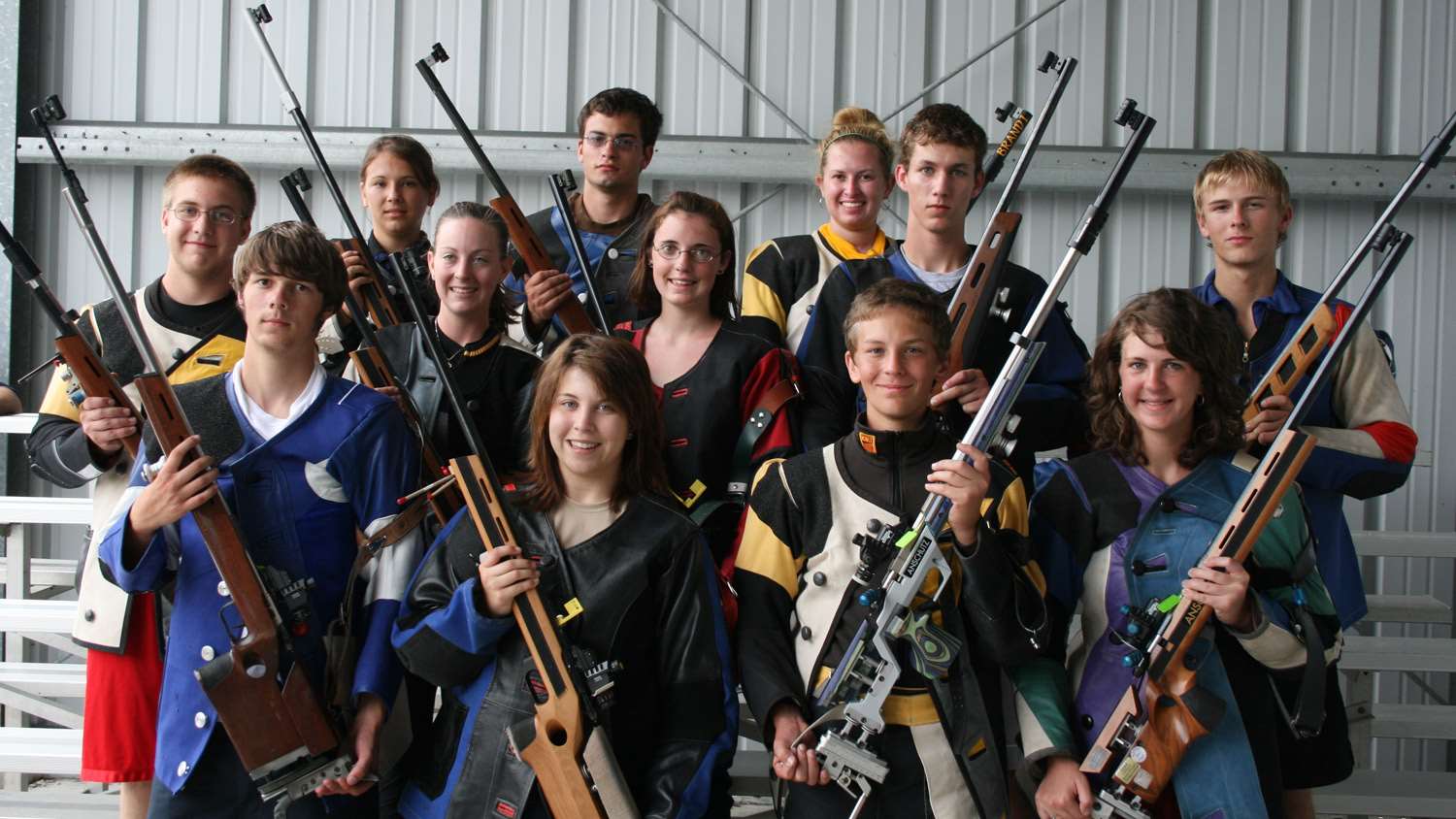
The position matches now took on the flavor of a prone match, where each point lost is almost catastrophic. Justin Pentz emerged the iron sight victor, picking up the brand new George Alves Memorial Trophy as high junior in the metallic sight aggregate. The trophy was presented in memory of Alves by the Delaware State Sportsmen’s Association in recognition of Alves’ lifetime dedication to the shooting sports as a coach and mentor to hundreds of junior shooters and teams. Mr. Alves was also long-time volunteer at the National Matches at Camp Perry and previous NRA Volunteer of the Year recipient. It was presented by Mrs. Alves and her daughter Ethel Ann, a fine shooter in her own right.
The second half of the position championships was as hot as the first, but the wind seemed to be calmer. Dave Sprecher posted an 1195-86X for the any sight championship. A nail biter of a contest had developed for the overall championship. The match went down to the X-count, with George Norton winning the inaugural Conventional National Three-Position Championship.
The day ended with a reception sponsored by the NRA at the Camp Perry Club House honoring Lones Wigger for his selection to the U.S. Olympic Hall of Fame. There was plenty of free finger food and a goodly crowd of well-wishers. Wigger, who always enjoyed free food and good companionship, was in fine spirits thanking all who supported his nomination.
Shooters expressed delight in the new challenge procedure. Until this year, challenges had to be made in the blind. You looked at the target in the brief time it took to procure a target change, and challenged if it did not agree with either your memory or written record. After a wait, which always seemed like days, you learned the news. Now all targets were displayed for public viewing. Competitors could view, but not touch, their targets. If the choice was to challenge, then the challenge staff who would rescore your target right there and then. Competitors were able to discuss the result and plead their case.
Position had been hot, breezy and clear, but prone began with an overcast that promised, and delivered some rain during the early morning. After a soaking shower it remained overcast, but the temperature rose making for an uncomfortably humid day. The metallic sight matches this year had added importance because they would not only determine the championship, but would be used to select the shooters representing the U.S. in the 2009 Roberts Trophy Match.
Mike McPhail won the day with a 1599-136X. The second day of metallic sights opened with clear weather, a slight haze, and a promise of rain which would bring about some unusual happenings. The rain began as the second stage of the first relay began to fire the Meter Match and firing continued until lightning began to flash and the range was evacuated. Only a few shooters had not completed firing before the match was interrupted. It was decided that the 50-yard match would be fired as scheduled, and those few who needed a continuation of fire to complete the Meter would be given that time at the end of the day.
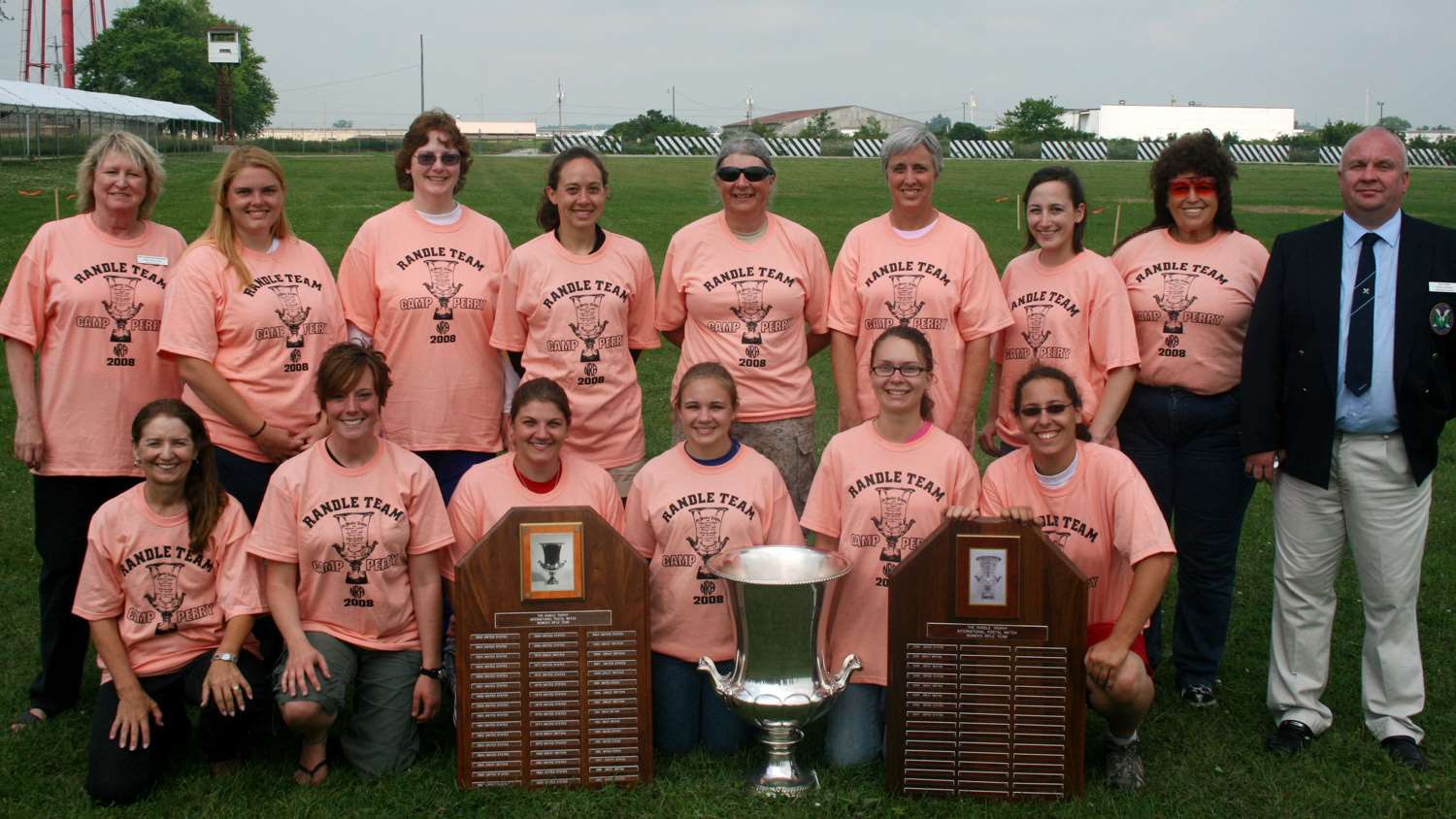
As a rule, the winner of the metallic sight championship can control the match because few points are surrendered with a scope. This year things would be quite different because of a wild and gusty wind that tore in from the northeast. It was a leader’s worst nightmare and Erik Hoskins emerged battered, but victorious, with a 1595-115X on the first day.
As the final match began, Kevin Nevius had a six-X edge over Tarl Kempley, who could win only if he was perfect and shot six more Xs than Nevius. Both were clean, but Nevius had 33 Xs to Kempley’s 32, and won the championship by seven Xs. (See Nevius pictured in 2008 on the firing line at the top of this article.) The match ranks as the third closest finish in National Championship history, right behind the Wigger-Weaver tie of 1987; and the 1953 three-way tie between John J. Crowley who had 255 Xs, Charlie Whipple with 253 and John Moschkau with a 252 X-count.
Martha Kelley became the first recipient of the Marianne Jensen Driver Memorial Trophy. Donated and presented by her daughters, Lenore Lemanski and Bobbi Vitito, it recognizes their mother’s many accomplishments in smallbore rifle shooting. It was particularly poignant as Kelly was mentored by Mrs. Driver.
2009
The NRA Smallbore Rifle Championships marked its 90th anniversary in 2009. Since Captain Edward “Ned” Crossman first conceived and brought it into being in 1919, his original vision had evolved, and this year would be no exception.
On the strength of a solid National Championship Record-setting performance, Tarl Kempley became the position metallic sight champion. When the scores were totaled Greg Drown had taken the any sight championship with a score of 1195-73Xs. Drown suffers from Muscular Sclerosis, which inhibits his body’s ability to deal with heat. The previous year he was laid low by the heat but this year the cool rain helped a cool shooter become the first disabled shooter to win a major smallbore rifle championship since G. Wayne Moore, who lost a keg as a youth, won back to back prone titles in 1947 and 1948. The Frank Parsons Trophy went to Joe Hein who bested 331 competitors for his first outdoor position title.
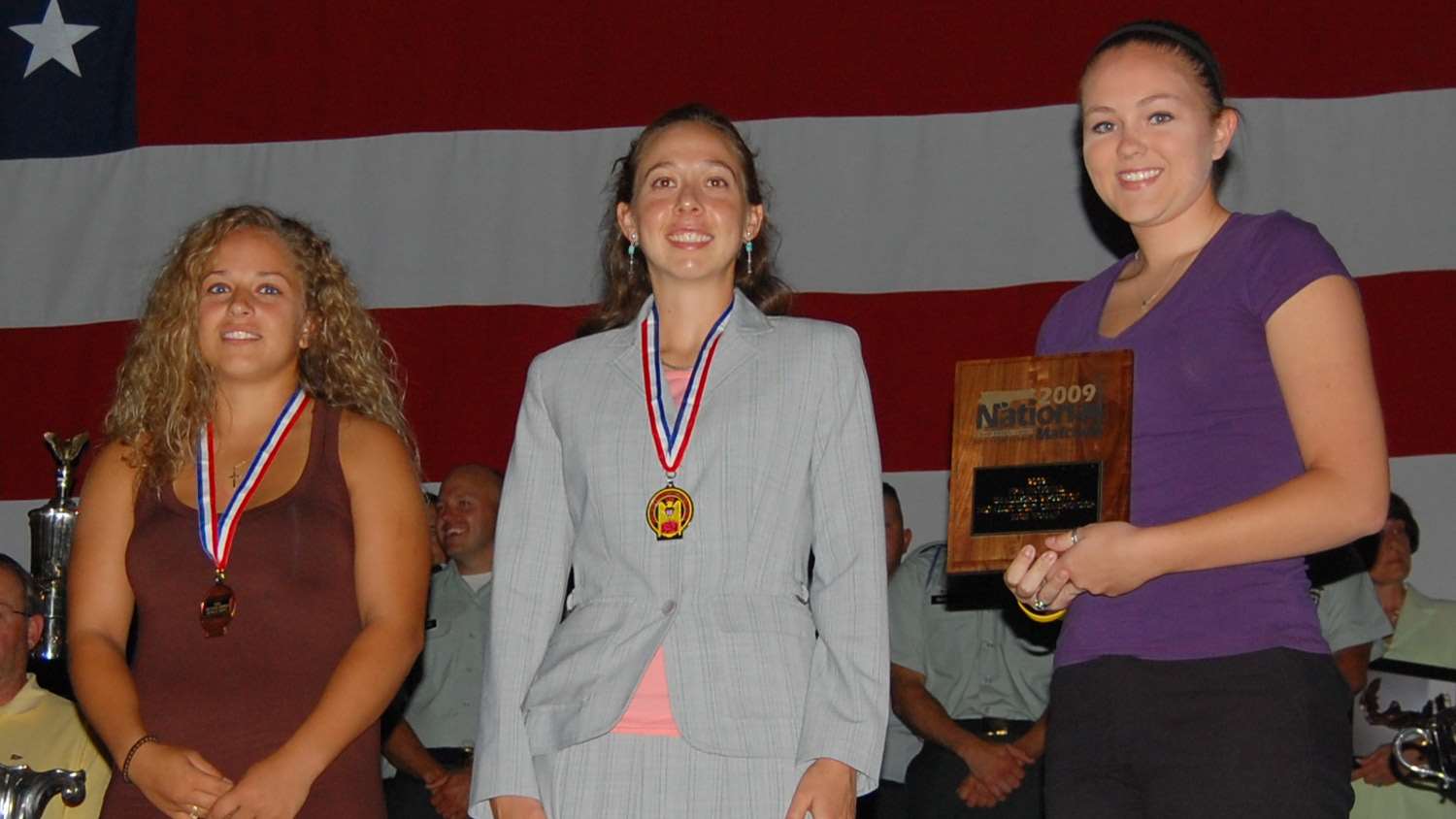
No sooner had the position shooters completed firing, the prone relay made its way to the firing line.
The individual prone championship, which had been reduced to a 4800-point aggregate, began under less than ideal wind conditions. The first day went to Rick Curtis who out Xed the recently crowned position champion Hein by one. The second daily aggregate went to Hein, whose head of steam from position helped him win the metallic sight aggregate.
After Team Day, the individual matches resumed with any sight competition under excellent conditions. Shane Barnhart shot a 1200-114X to win the daily aggregate.
The final day of the 2009 championship opened with Barnhart shooting his third clean out four for him in Dewar matches. It was a good start as he won the day and the any sight aggregate.
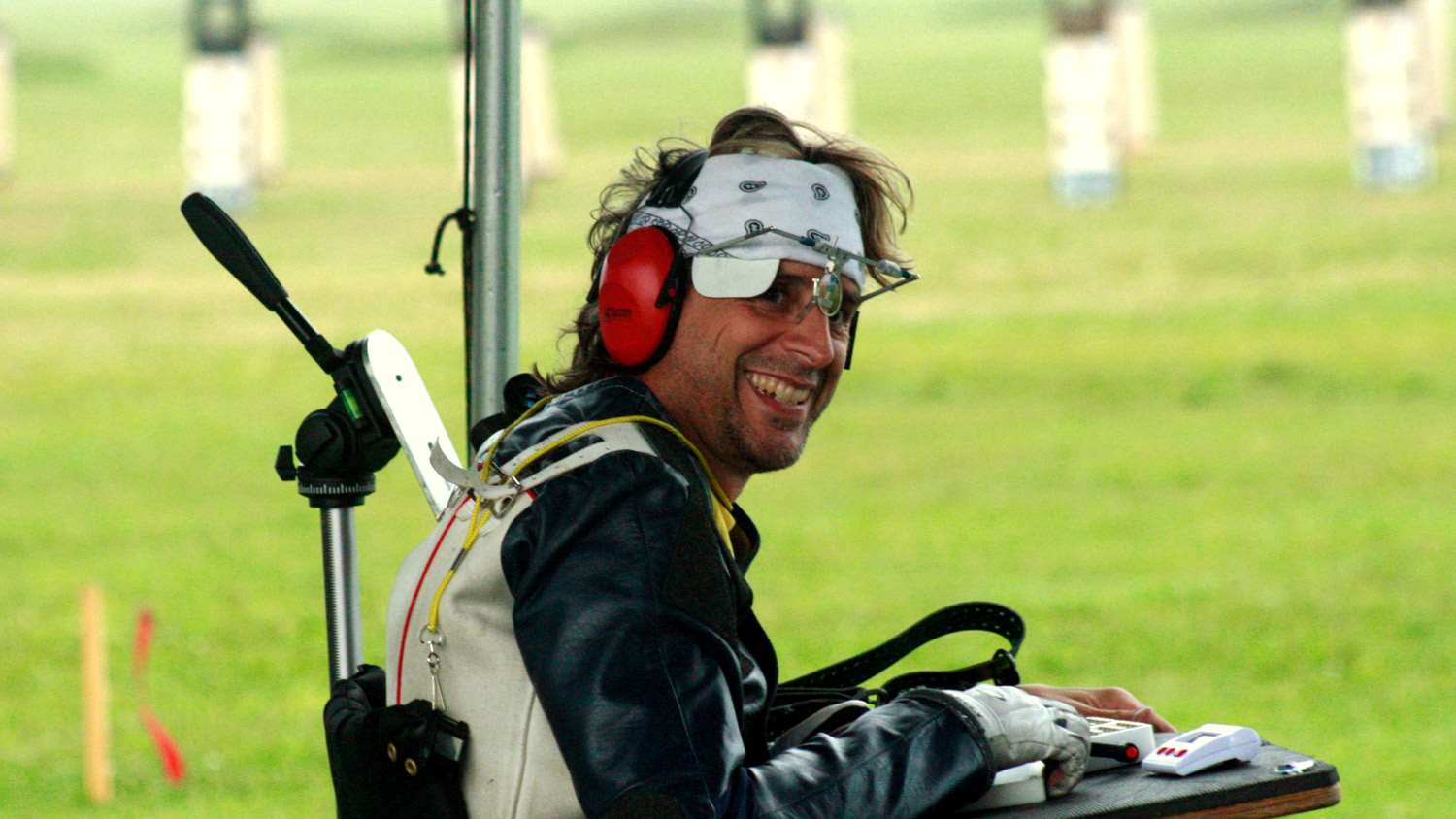
The grand aggregate winner was British shooter Richard Fowke. However, Fowke was unable to claim the title as it can only be won by a United States citizen. The same conditions exist in Great Britain where citizenship is required to even enter their national championship. As a result, Hein took home the Critchfield Trophy. Hein also became only the second person to win both outdoor smallbore rifle titles in the same year, a feat accomplished only twice before by the legendary Lones Wigger.
Read the previous articles in this series:
- The Seed Is Planted
- The Roaring Twenties
- Depression and War
- Post-War Reorganization and Innovation
- Golden Age, Part 1
- Golden Age, Part 2
- The 1980s
- The 1990s
See more: National Smallbore Outdoor Rifle Championship Centennial













